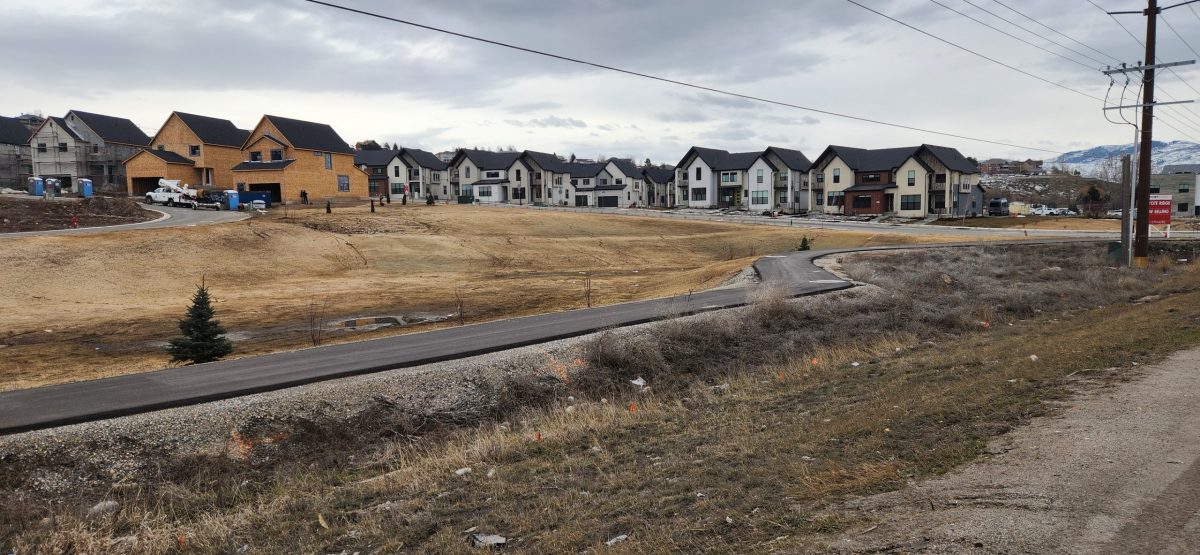What will happen to Heber Valley if governments and locals don’t pay serious attention to the community’s affordable housing crisis?
According to Mountainlands Community Housing Trust Executive Director Jason Glidden, it could be the same thing that’s happened in other places where workers, public servants and other everyday employees can’t afford to live — places like Jackson Hole.
“They have probably the most expensive homes per capita. You’re driving out that local workforce, which now have to live an hour away, commute in an hour away,” he said. “This spring, they had their highway washout through the pass between Driggs, Idaho, which is one of the major places where the workforce lives, and Jackson.”
This left workers unable to get to their jobs, or at least unable to get there without adding an extra hour and a half to their commute times.
“What does that do to a local economy?” Glidden said. “But more important to me, who is going to be the next community leaders? Who are going to be the next nonprofit leaders? Teachers? Public safety officials? If you don’t give them the opportunity, and they can’t even live close to here, they’ll find jobs closer to where they live, and eventually, you’re not going to have that workforce to support a thriving community.”
Mountainlands Community Housing Trust recently commissioned a study on housing throughout the Wasatch Back, factors that have contributed to the current situation as well as economic disadvantages communities face relying on commuters to keep the lights on. Presenters shared their findings with members of Wasatch County’s community Monday evening.
The study — which composited data for both Wasatch and Summit Counties — showed that, since 2010, total employment has increased by 47.6%, and 70% of that growth is commuters.
The area has also become significantly more rich. Since 2010, households making $75,000 or less have decreased by 17%; in that same time, households making at least $200,000 have increased by 291%.
The study also pointed out the economic benefits that will befall the community if it invests in affordable housing.
The study looked at what would happen if the community built 100 homes, as well as if each of those homes’ residents worked 1.73 jobs and sent 0.4 children to school.
Through a variety of factors — including volunteer work, commute hours saved, taxes and, most significantly, positions filled — the study found that spending money on more rental units would bring a 5.85 yield on investment, meaning $100,000 of community money contributed toward rental multifamily units would result in about $585,000. For that same return to be made on owned single-family units, the community would need to invest $400,000.
Though Summit and Wasatch Counties may have historically faced different issues when it comes to housing, Glidden said that has changed in recent years.
“A lot of the housing issues started in Park City 30, 40 years ago,” he said. “You didn’t see that maybe so much in the Wasatch back, and as the workforce got pushed out of Park City, they got pushed further into Summit County or down into Wasatch County. Demand started to increase. It’s like squeezing a balloon; it’s going to expand somewhere.”
As workers spread to find homes, so did housing affordability issues. First, the problem grew throughout more rural areas of Summit County. Now, they’re in Wasatch County as well.
“Home prices have rocketed up in Wasatch County,” Glidden said. “You are looking at very similar demographics. Maybe not to the scale of Park City yet, but it’s not far behind.”
If it’s hard for you to believe that the rural, once-primarily agricultural Wasatch County’s issues align with an upper-end ski town’s, you’re not alone.
When Wasatch County Councilor Kendall Crittenden — who was in the audience — said 60-70% of the community’s homes are second units, there were audible murmurings and whispers throughout the room.
Scott House, a member of the Park City Chamber of Commerce, Convention and Visitors Bureau, was discussing a question he’d heard from a community member who wondered if communities could benefit from more second home owners.
Andrew Knudsen, a member of the firm that performed the study, said the issue with second homes — and the reason why communities can’t rely on them despite their higher tax rates — is because they don’t regularly contribute to local retail, thus not regularly contributing to local retail sales tax.
“It’s a fallacy to think that the easy way out is to cater to second home owners,” Knudsen said.
They could potentially spend less and require just as much from the community, Knudsen said, and that’s before even considering the social fabric and having homeowners who aren’t full-time members of the community.
What can help solve the community’s housing problem, according to Glidden, are locals who are willing to become housing advocates, people who are willing to support affordable housing projects not only in their county or town, but in their neighborhood.
“There’s this ongoing notion of NIMBYism — not in my back yard,” he said. “We need to have more YIMBYs — yes in my backyard. We need more people that are going to come out and talk about the importance of affordable housing. And that doesn’t mean you have to come and speak at a public meeting. Maybe you write a letter to your elected officials or to your local newspapers or media outlets to say this is important to us.”
He added that people can volunteer for Habitats for Humanity or Mountainlands Community Housing Trust.
“We need more people to come in and say, yes, this is the right place,” he said. “We need this if we want to continue to be a thriving community that’s vibrant and full of community members.”

